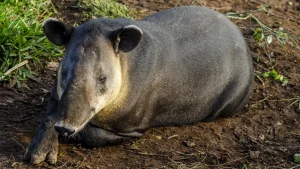Santa Barbara Mountain National Park
It has some of the least explored and most diverse ecosystems in Central America. The highest peak in the Santa Barbara National Park is the Santa Barbara Mountain. With a height of 2,744 meters above sea level (masl), it is the second highest mountain in Honduras.
Santa Bárbara Mountain was declared a National Park in 1987. The Park contains cloud forests, humid forests and pine forests constituted in a total area of 321.23 km2, which includes a buffer zone of 190.27 km2 and a core zone of 130.96 km2 over 1800 meters above sea level.
Santa Bárbara Mountain is a massive formation of lime, characterized by a network of caves and tunnels. For this reason, no surface water is found in the upper parts of the mountain; the water filters through the porous stone to the 50 communities that depend on the mountain and its watersheds for the supply of drinking water. Santa Bárbara Mountain is the only high-altitude limestone mountain in Central America.
Although it has in common with Montaña Celaque some mountain plant species such as Abies Guatemalensis, Taxus globosa and Drimys granadensis, the limestone composition, the topography and the scarcity of surface water have created special ecosystems. There are several types of forest ecosystems in the Santa Bárbara National Park that are unique in Honduras and are not found in any other Central American country and are:
- Upper montane broadleaf evergreen forest on karst hills. Surrounding the Santa Bárbara Mountain, this forest forms the first levels of the cloud forest, it contains a quantity of oak and oak, such as Quercus cortesi, Quercus bumeliodes, Quercus lancifolia and Quercus laurina and several types of aguacatillos such as Nectandra heydeana, Ocotea veraguensis and phoebe hilictirifolia .
The endemic fern, Anemia doncel-smithii, which is found in Honduras only in the Santa Bárbara Mountain, and the endemic tree Alfaroa hondurensis, are present in the understory of this ecosystem. There are several types of epiphytes, including bromeliads where the endemic amphibian Nototriton nasales lives. Also, in this type of forest is the endemic lizard Norops rubribarbaris. - High montane broadleaf evergreen forest on karst hills – Santa Bárbara Mountain is the only habitat in Central America where this type of forest is found. In this ecosystem there are trees such as Alfaroa hondurensis, Cornus disciflora, Prunus brachybotrya and Celastrus volcanicolus.
- Mixed high montane broadleaf evergreen forest on karst hills – This ecosystem exists in Central America only on Santa Bárbara Mountain. This forest in Santa Bárbara National Park is the habitat of two endemic species found nowhere else in the world: the Mahonia glauca shrub and the lungless salamander, Dendrotriton sanctibarbarus, which is the only amphibian in Honduras that lives above 2,700 meters above sea level.
Santa Bárbara National Park borders Lake Yojoa to the east and Cerro Azul Meámbar National Park to the east. The lake and both National Parks constitute one of the regions with the most biological diversity in Honduras.
The region contains 17 individual ecosystems and there are: 169 reported species of ferns that constitute 25% of the ferns reported in Honduras. 407 birds, which represents 55% of all bird species identified in Honduras.
15 endemic plants that only Honduras has, such as the herb Petravenia cyrill-nelsonii, and the ornamental palm Cryosophilla williamsii. Of the identified species of reptiles and amphibians in Honduras, it is estimated that it has 40%.



